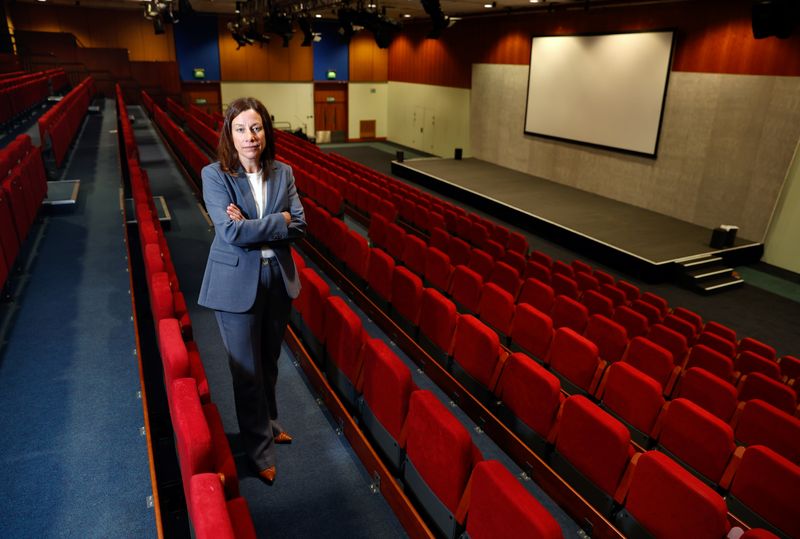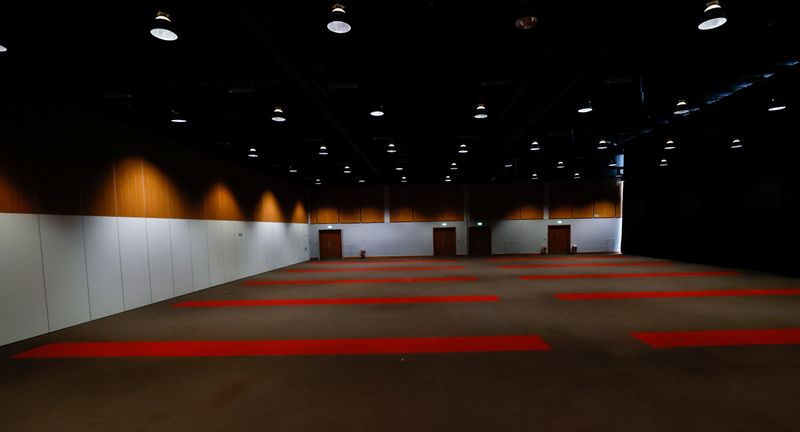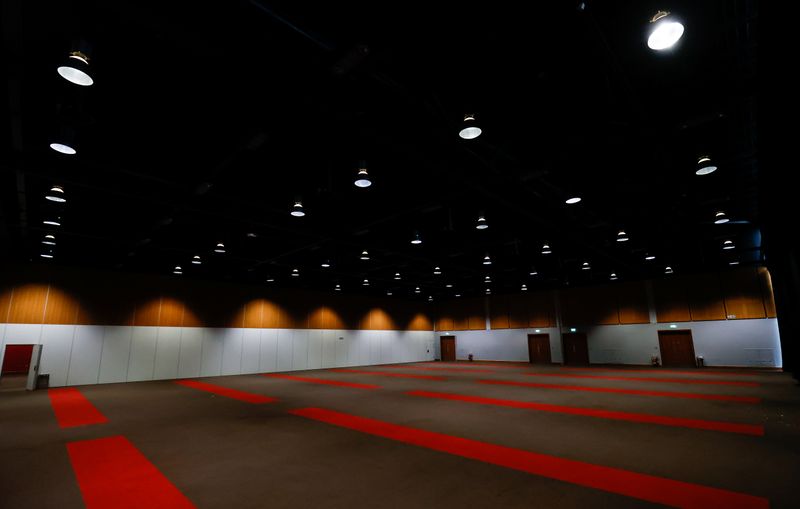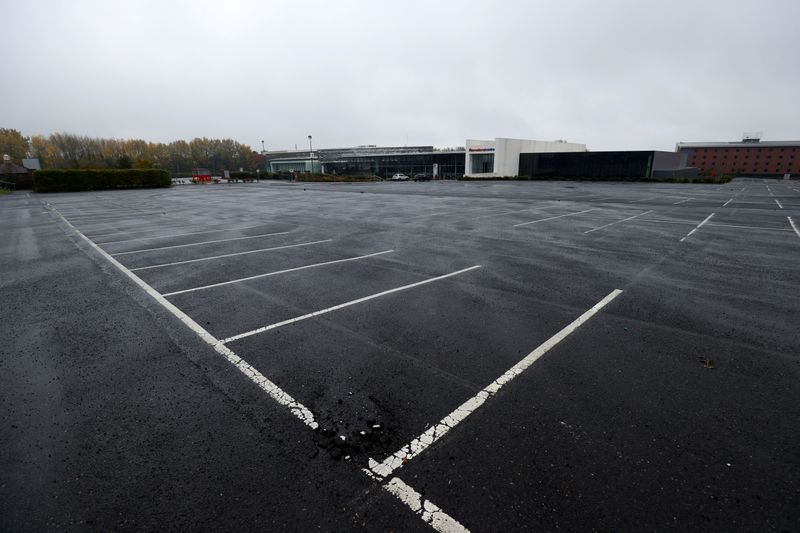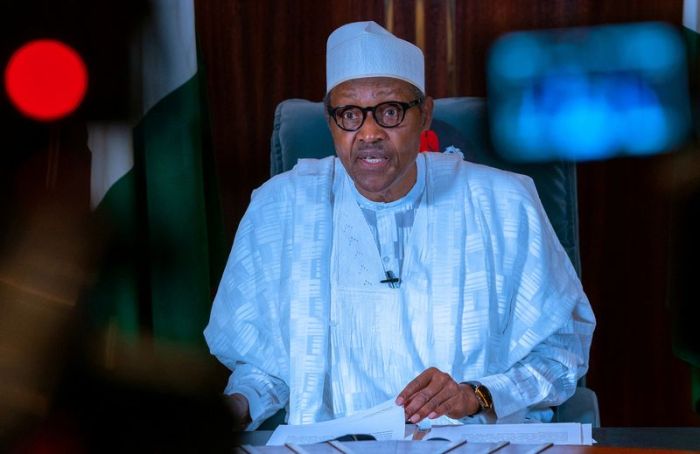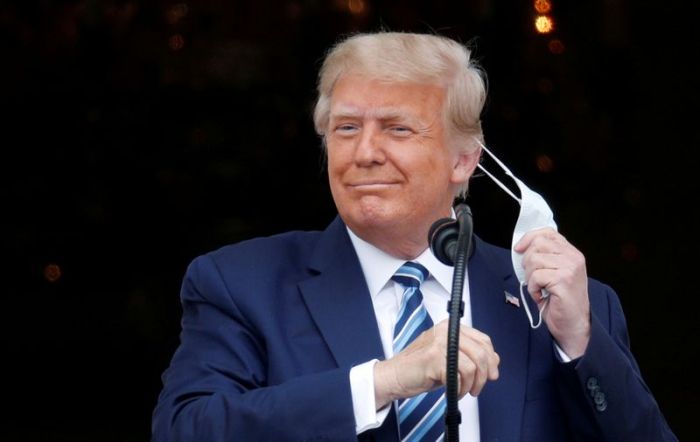LONDON (Reuters) – Like thousands of employers in Britain, Alison Griffin fears she could soon have to lay off more staff at her huge events venue when the government ends its flagship coronavirus job support programme in three weeks.
A planned Oct. 1 reopening of the sector never happened because of a second coronavirus wave, and Griffin’s business in central England will get little benefit from new support measures that the government wants to limit to “viable” jobs.
“It bewilders me,” said Griffin, whose cavernous, glass-walled Telford International Centre has hosted medical conferences, gymnastics tournaments and tattooing conventions, and still has bookings for 2021 and beyond.
The businesswoman cut 20 of her company’s roughly 80 staff from the family-run business at the start of the pandemic.
Now more might follow.
Britain is acting much sooner than European counterparts in scaling back job support, forcing businesses into tough decisions while they have little or no revenue.
As COVID cases surge again, hundreds of thousands of job losses are likely before the end of the year, industry groups and analysts warn.
Finance minister Rishi Sunak ripped up the economic orthodoxy of his Conservative Party at the onset of the pandemic with his Coronavirus Job Retention Scheme.
The scheme paid up to 80% of the wages of furloughed staff, at a total cost of about 50 billion pounds ($65 billion). It benefited around 9 million employees at its peak, cushioning the impact of an unprecedented 20% collapse in economic output
But Sunak has warned he cannot save all jobs, and – with one eye on record government borrowing – he will end the plan on Oct. 31.
Roughly 2 million workers were receiving some help from the programme in September, mainly in hospitality and entertainment.
In its place, businesses will receive a 1,000 pound grant for every employee they retain for at least three months, and the government will top up salaries of workers who return part time, as long as businesses contribute an equal amount.
For Griffin, this support falls far short.
She does not expect to qualify for extra aid for businesses that must shut down completely to slow the spread of COVID-19 because her 15,000 square metre venue can still host meetings of up to 30 people, a far cry from its 12,500 capacity.
“That’s like saying you’d allow a cinema to open to sell popcorn, but not to go to a film,” she said.
“Honestly, it’s very disappointing”
Next month Griffin plans to bring furloughed staff back part-time for basic maintenance work. But this is no long-term solution. “We’ve made some redundancies … and now obviously we’re concerned we may have to do the same again in either December or January,” she said.
The business previously had an annual turnover of around 9 million pounds, hosting as many as 140 events a year that brought up to 250,000 visitors to Telford.
Now revenue has fallen almost to zero, and the business has had to seek government-backed loans to keep going.
Attempts to adapt by promoting the venue as a space for film shoots have borne little fruit, and Griffin envies Germany, where trade fairs have resumed under social distancing rules.
PRE-CHRISTMAS LAYOFFS
Britain is currently reporting five times as many new cases as Germany, and has Europe’s highest death toll, with more than 42,000 fatalities.
The challenges in Telford are mirrored across Britain, and the events industry has written to Prime Minister Boris Johnson warning that 90,000 jobs are likely to go before Christmas.
For the broader hospitality sector, concerns are even greater. Last week it warned that well over half a million job losses were looming as the government imposed early closing on pubs and restaurants.
The Bank of England has forecast the jobless rate would hit 7.5% by the end of the year and the number of people unemployed would almost double to 2.6 million.
Official data on Tuesday showed unemployment in the three months to August rose to 4.5%, its highest since 2017, and there were 227,000 redundancies, the most since 2009.
(See graphic: https://fingfx.thomsonreuters.com/gfx/polling/xklvymeogvg/Pasted%20image%201602580974994.png)
Large employers looked on course to make 600,000 people redundant in the second half of 2020, said Tony Wilson, director of the Institute for Employment Studies think tank, based on notices of possible redundancies firms gave the government.
Wilson – like many analysts – thinks Sunak’s recent measures could have been better designed to limit job losses by targeting the sectors that have found it hardest to recover from lockdown.
The new Job Support Scheme requires firms to contribute to top-up pay for workers on reduced hours, in contrast to short-time schemes in countries such as Germany.
Sunak said he only wanted to support jobs where employers were confident enough to take staff back part-time – with the implication that other workers should seek new employment.
“For the employers that need this support most and that are facing the biggest financial difficulties, they’re just not going to be able to afford to take part,” Wilson said.
Britain’s government has said it expects employers to take account of redundancy costs, and the expense of hiring new staff once demand picks up, when deciding whether to use the scheme.
Low-interest government loans are available too.
This approach to weaning employers off wage support made more sense in August and early September, when coronavirus cases remained low, job vacancies were rising and some sectors were almost back to normal, Wilson said.
Now, many businesses with positive long-term prospects risk being forced into premature job cuts. “It’s the second wave that has made that strategy really risky,” Wilson said.
($1 = 0.7653 pounds)
(Graphic by Andy Bruce; Reporting by David Milliken; Additional reporting by Jason Cairnduff in TELFORD, England; Editing by Andrew Cawthorne)

